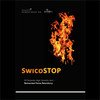Flame retardant and flame proof characteristics are typically added to industrial and consumer products to meet flammability standards for furniture, electronics, and building products like insulation. This also holds true for textiles. If for upholstery, fire fighter clothing or curtains, inherent and permanent flame inhibiting properties are there to provide safety, one of the paramount concerns of our society.
Flame retardancy (FR) in textiles can be met by various ways:
- additive
the flame retardant substance, also called masterbatch, is mixed into the polymer before the spinning/extusion process
- inherent
the material itself is flame retardant / flame proof
- coating
the yarn or the textile are coated with a FR layer (e.g. TPU) after they finished production
Flame retardancy for plastics is usually measured in the LOI, the so called limiting oxygen index. The LOI describes the minimum concentration of oxygen, expressed as a percentage, that will support combustion of the polymer. The higher the LOI, the better the flame retardancy, whereas the crucial lower LOI for FR is higher than 21%. This due to the air normally consisting out of 21% oxygen, the most important substance in any combustion process.

 SwicoStop Polyester high tenacity flame retardant
SwicoStop Polyester high tenacity flame retardant